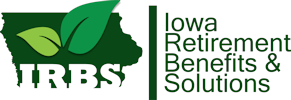What Is the Retirement Red Zone —and Why It Matters to You
Posted by Ethan Ball
Serving Cedar Rapids, Iowa, and Surrounding Areas.
What Is the Retirement Red Zone—and Why It Matters to You
If you’re thinking about retiring in the next 5 to 10 years, you’re officially entering what I like to call the retirement red zone. It’s a crucial window of time—five years before and five years after retirement—where the financial decisions you make carry a lot more weight. Why? Because the closer you get to retirement (and the first few years into it), the less time you have to recover from setbacks like market downturns or unexpected expenses. It’s a period filled with opportunity, but also risk. That’s why having a solid game plan is so important right now.
Let’s walk through what you should be thinking about—and doing—during this stage, so you can protect your nest egg, reduce stress, and retire with confidence.
Start with Your Retirement Timeline
When do you want to retire? That’s the first question to ask yourself. Knowing your target retirement age gives you a framework for everything else—from how to invest your money to when you should start drawing Social Security.
It’s okay if this timeline feels a little uncertain right now. Retirement isn’t just a financial event—it’s a major life transition. For many, it’s about shifting identity, routines, and even social circles. Give yourself space to mentally prepare for what’s ahead, just as much as you prepare financially.
Know Your Retirement Number
Do you know how much income you’ll need each month to support your lifestyle in retirement? It’s more than just a guess—it’s a crucial piece of your plan. Start by estimating your monthly needs, including housing, healthcare, travel, daily expenses, inflation, and taxes.
A good starting point is the “4% rule.” For example, if you want to withdraw $60,000 per year from your savings, you might aim to have about $1.5 million saved. That said, everyone’s goals and situation are different—so don’t rely on rules of thumb alone. A personalized strategy always works best.
Supercharge Your Savings
Now’s the time to max out your retirement contributions—especially if you’re in your 50s or early 60s. Catch-up contributions allow you to contribute more than younger workers. In 2025, for example, you can put in up to $30,500 into your 401(k) and up to $8,000 into an IRA.
Think of this as your “final sprint.” The more you contribute now, the more freedom and peace of mind you’ll have later.
Adjust (But Don’t Abandon) Investment Risk
As you near retirement, protecting your savings becomes more important—but that doesn’t mean pulling everything out of the market. You still need some growth to outpace inflation and support a long retirement.
The key is balance. One approach many people use is the “bucket strategy,” where you divide your assets by time horizon:
-
Bucket 1: Safety/ income bucket.
-
Bucket 2: Growth bucket.
An advisor can help you structure this in a way that aligns with your comfort level and goals.
Time Your Social Security Wisely
You can start claiming Social Security as early as age 62—but waiting can pay off. For every year you delay past your full retirement age, your benefit increases by about 8% until age 70.
But when to claim isn’t a one-size-fits-all decision. It depends on your health, marital status, income needs, and other assets. If you’re married, there may be spousal strategies that boost your household benefit. The point is, don’t guess. Understand your options and don’t make your decision based off what your best friend did.
Ask About an In-Service Rollover
If you’re still working and at least 59½ years old, you probably have the option to roll over money from your employer’s retirement plan into an IRA—even while continuing to contribute to your 401(k). This is called an in-service rollover, and it could give you access to more investment options, better income planning strategies, or tools like annuities with income riders.
In my opinion, this is one of the most important moves you can make.
Plan for Healthcare Costs
Healthcare is one of the biggest wild cards in retirement. A 65-year-old couple today may need over $300,000 for healthcare costs alone—not including long-term care.
Here are a few ways to prepare:
-
Use a Health Savings Account (HSA) if you’re eligible
-
Make a Medicare game plan (know when to enroll and compare options)
-
Look into long-term care insurance or hybrid policies (now-not later)
The goal is to plan ahead, not be caught off guard later.
Tackle Debt Before You Retire
Carrying debt into retirement—especially high-interest debt—can strain your cash flow and increase stress. If possible, work toward paying off credit cards, car loans, and even your mortgage before you retire.
I know that downsizing or letting go of a long-time home can be an emotional decision. But simplifying your lifestyle now could bring more financial flexibility and peace of mind in the future.
Turn Savings Into Income
Once the paychecks stop, your focus shifts to creating income from your savings. A good strategy combines guaranteed sources (like Social Security, pensions, or annuities) with flexible withdrawals from your investment accounts.
You may want to build a reliable “income floor” to cover your essential needs, then use other accounts to fund travel, hobbies, or fun extras. That kind of structure helps you feel confident even during market ups and downs.
Prepare Emotionally—Not Just Financially
Retirement isn’t just about money. It’s about how you’ll spend your time, what will give you purpose, and how you’ll stay socially connected.
Ask yourself:
-
What does my ideal day in retirement look like?
-
What hobbies, travel, or volunteering opportunities excite me?
-
How will I stay active and engaged?
Many retirees struggle more with identity and routine than with finances. Thinking ahead about your “life plan” is just as important as your financial one.
Avoid Common Retirement Mistakes
Here are a few pitfalls to avoid in the red zone:
-
Holding too much (or too little) investment risk
-
Underestimating healthcare costs
-
Claiming Social Security too early
-
Lacking a withdrawal strategy (income)
-
Forgetting about tax planning
Avoiding these missteps can make the difference between a stressful retirement and a secure, enjoyable one.
Don’t Go It Alone—Work with a Retirement Planner
You don’t have to figure this all out by yourself. A fiduciary financial advisor (like myself)— is someone who specializes in retirement income planning—can help you build a strategy that’s aligned with your lifestyle, values, and goals. We can assist with:
-
Tax-efficient withdrawals
-
Investment management
-
Pension and Social Security optimization
-
Roth conversions
-
Legacy and estate planning
Having a trusted partner in your corner can bring clarity and confidence to your retirement journey.
Final Thoughts: The Retirement Red Zone Is Your Window of Opportunity
The retirement red zone isn’t something to fear—it’s a chance to take control, make smart decisions, and create a future you’re excited about. The choices you make now will shape the next 30+ years of your life. So take it seriously. Take it personally. And most importantly—take action.
If you’re within 5 to 10 years of retirement and want a plan tailored to your goals, we’re here to help. Let’s build your retirement game plan together.
Ready to Take Control of Your Retirement?
Schedule your Retirement Red Zone appointment today!
Email us at info@iowaretirementsolutions.com
Call us at 319-423-3332
Click here to schedule your free consultation.
Investment advisory services are offered through Fusion Capital Management, an SEC registered investment advisor. The firm only transacts business in states where it is properly registered or is excluded or exempted from registration requirements. SEC registration is not an endorsement of the firm by the commission and does not mean that the advisor has attained a specific level of skill or ability. All investment strategies have the potential for profit or loss.




